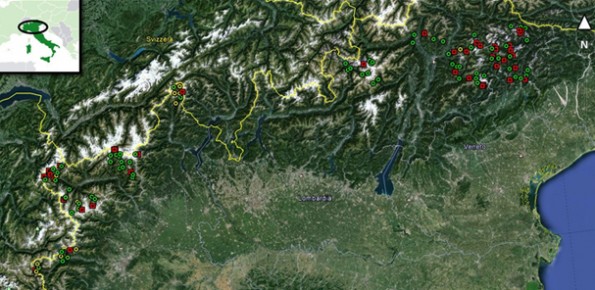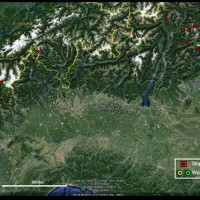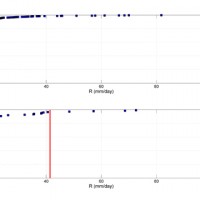Climate change on slope failures initiation in the Italian Alps
(ImpClimAlp)

Background
Climate change in the Greater Alpine Region is seriously affecting glacial and periglacial areas, with relevant consequences on slope stability. Cryosphere degradation, changes of the precipitation and temperature patterns and of the hydrological regimes, are some of the main terrestrial indicators of climatic change. Moreover, the increasing number of tourists and human activities rise the level of risk.
Purpose
- Studying the relationship between climatic variables and slope failures triggering in the alpine glacial and periglacial areas (>1500 m a.s.l.).
- Interpreting the mechanism of initiation of slope failure based on the results of this study.
Methods
Implementation of a statistical-based approach method which allow to compare the meteorological conditions at the time when the instability occurred with the typical conditions in the same place. The aim is to determine if any of the meteorological variables (mainly temperature and precipitations) had non-standard values in the lead-up to the slope failure event.
Results
- New knowledge about the role of climate factors on slope failures triggering at high-mountain sites.
- Developing an integrated system for the management of numerical and textual data. (http://geoclimalp.to.cnr.it/dbalps/index.jsp).
- Identification of specific patterns for each kind of process.
- Developing a model which could calculate the probability of occurrence of a slope failure related to climatic conditions, to be used as early warning system.
Products
- Reports and scientific publications.
- Data sets, statistical elaborations and graphs related to geohazards.
- Integrated system for the management of numerical and textual data related to geohazards and climate data.
Conclusions
The approach is being tested on a large sample of events. This will allow us to:
- verify the sensitivity of the method;
- make preciser hypothesis on the role of climate forcing on the initiation of slope failure, as a contribution to anticipate the impacts of ongoing climate change on environmental dynamics.





